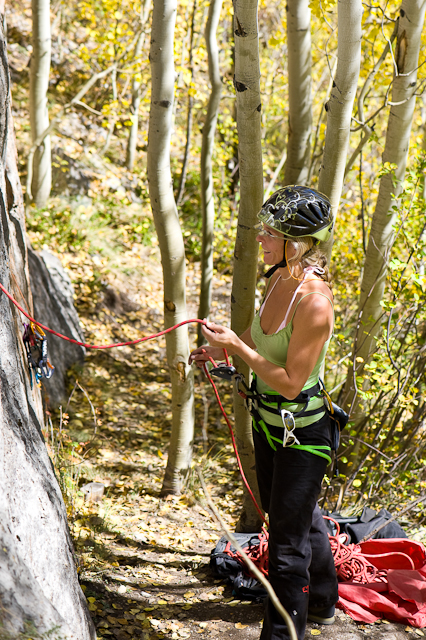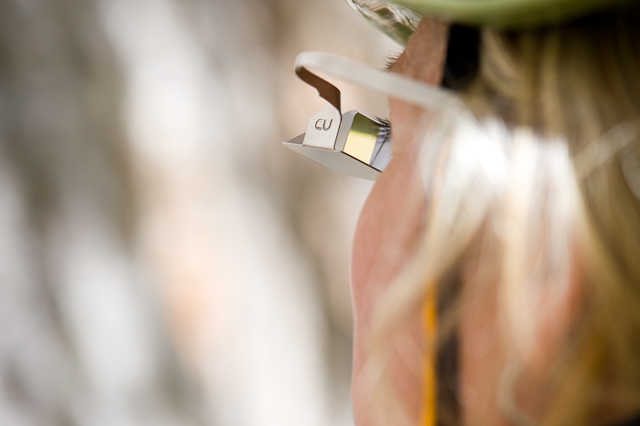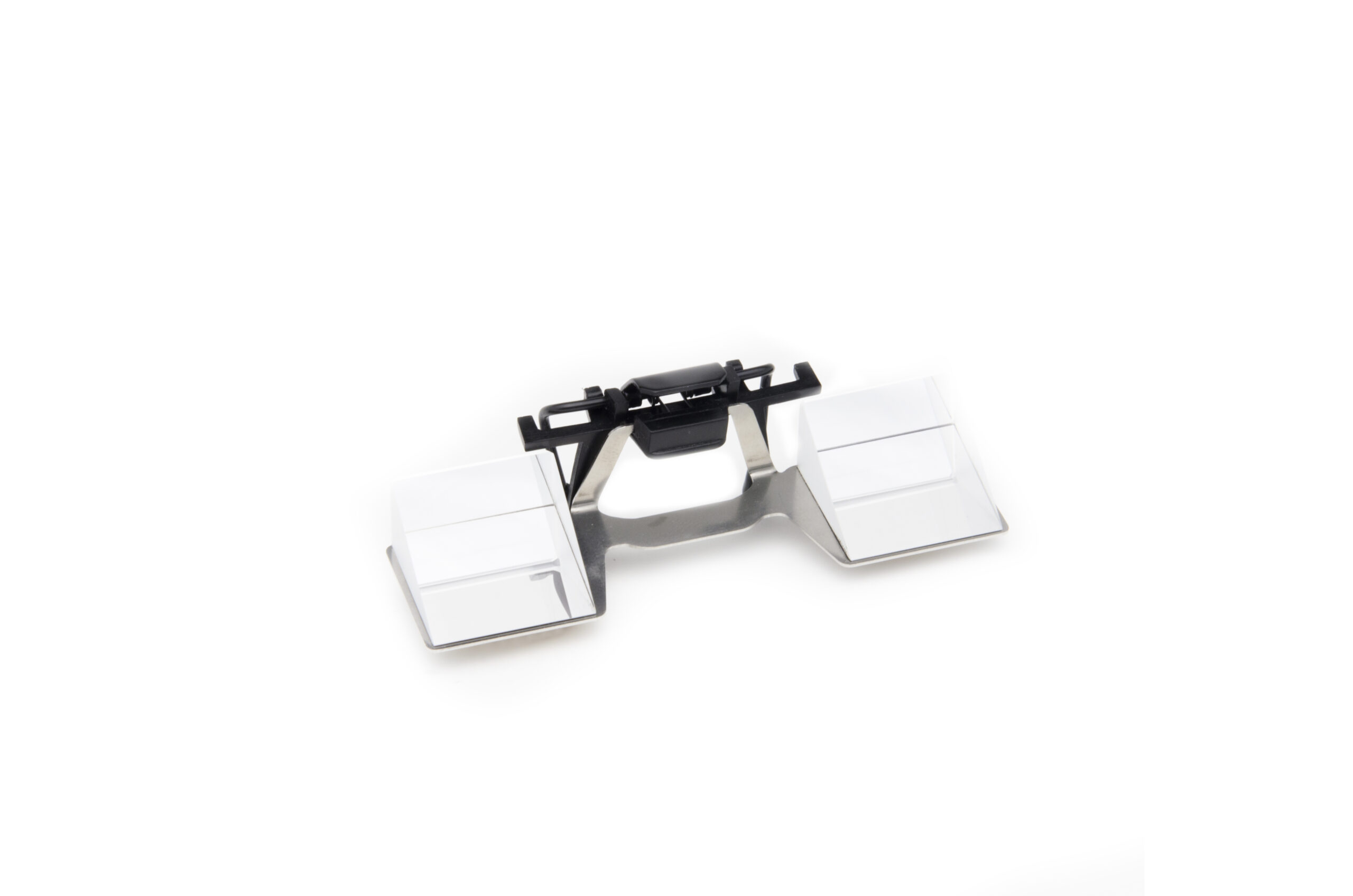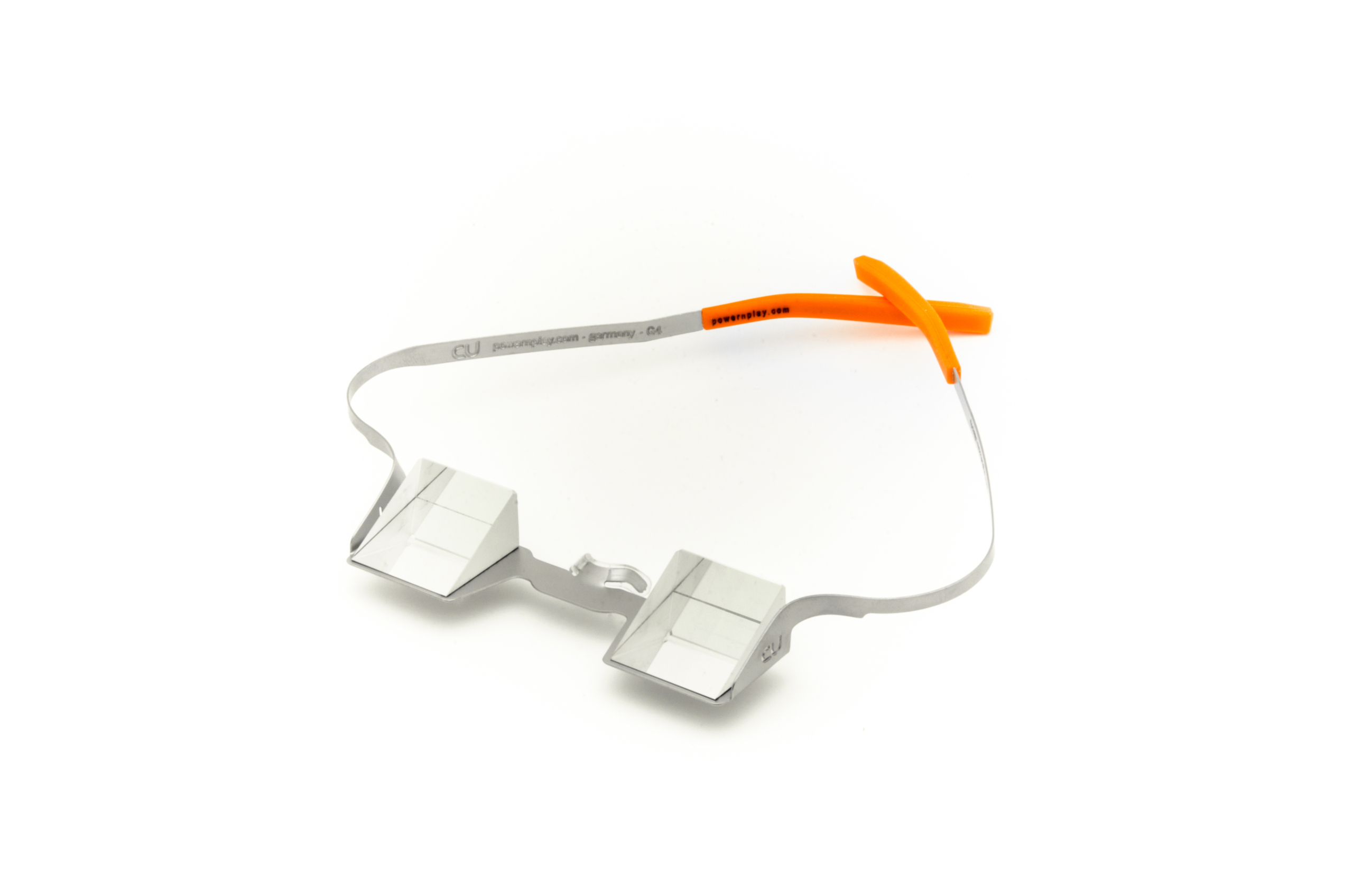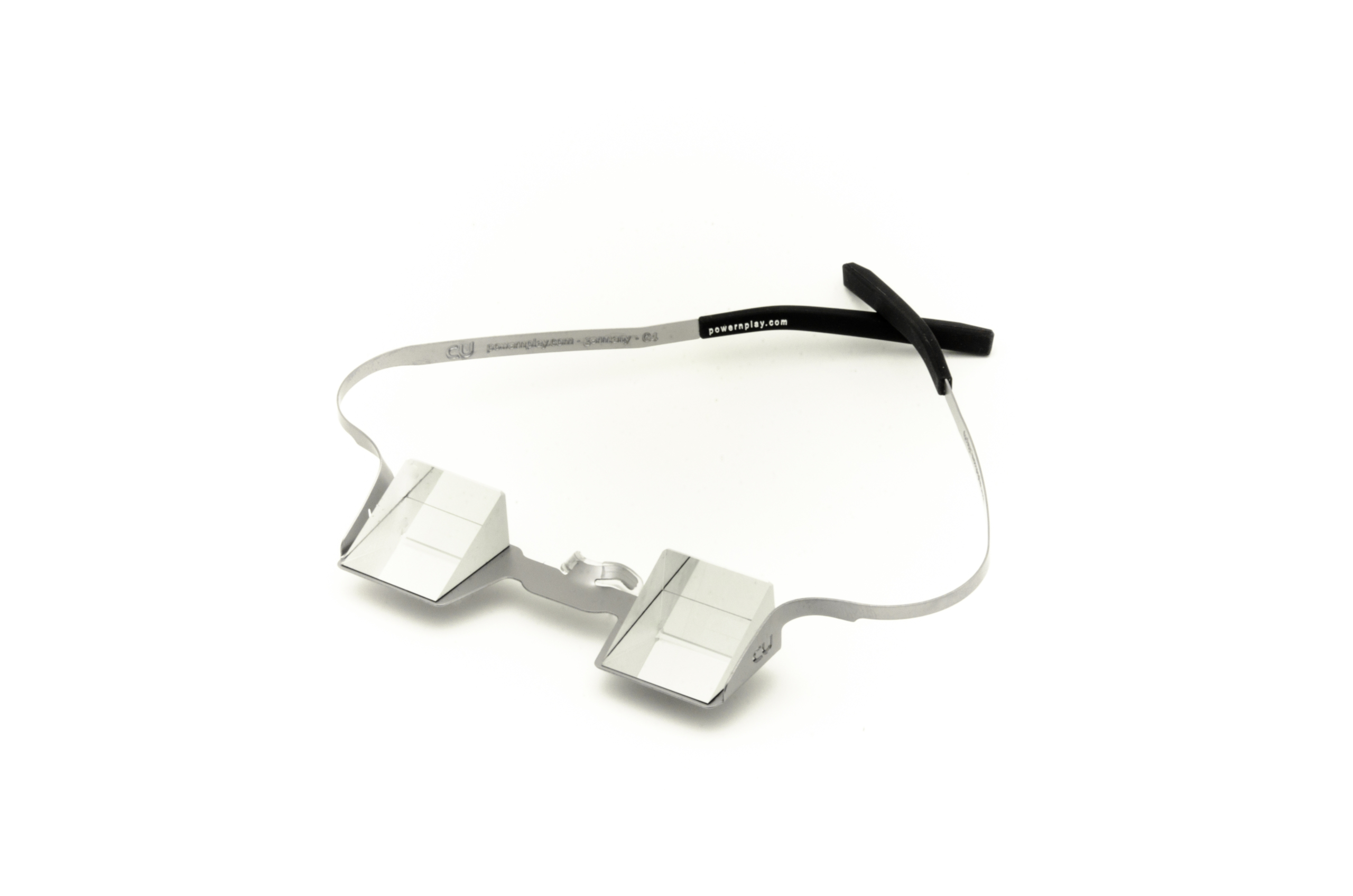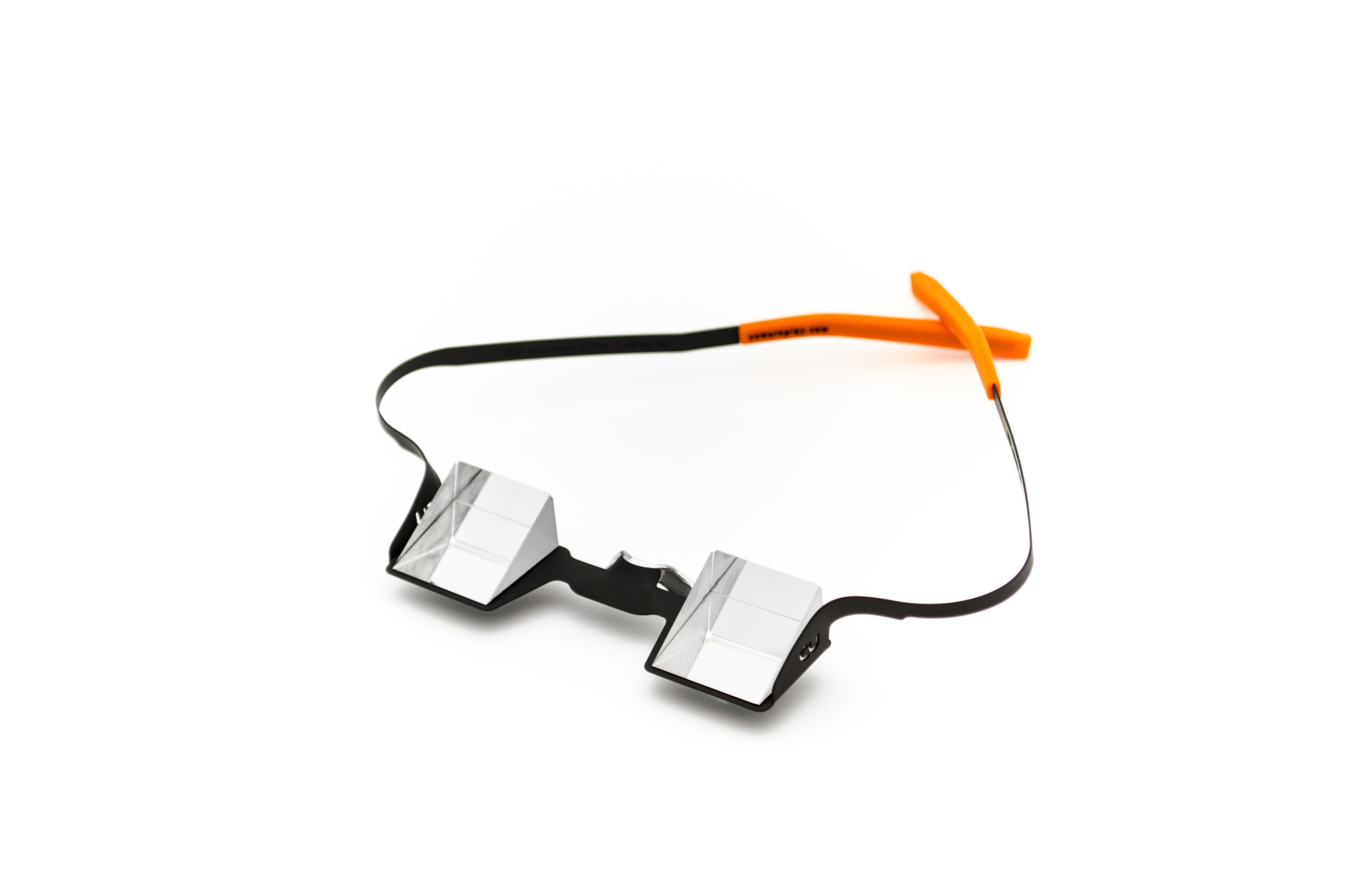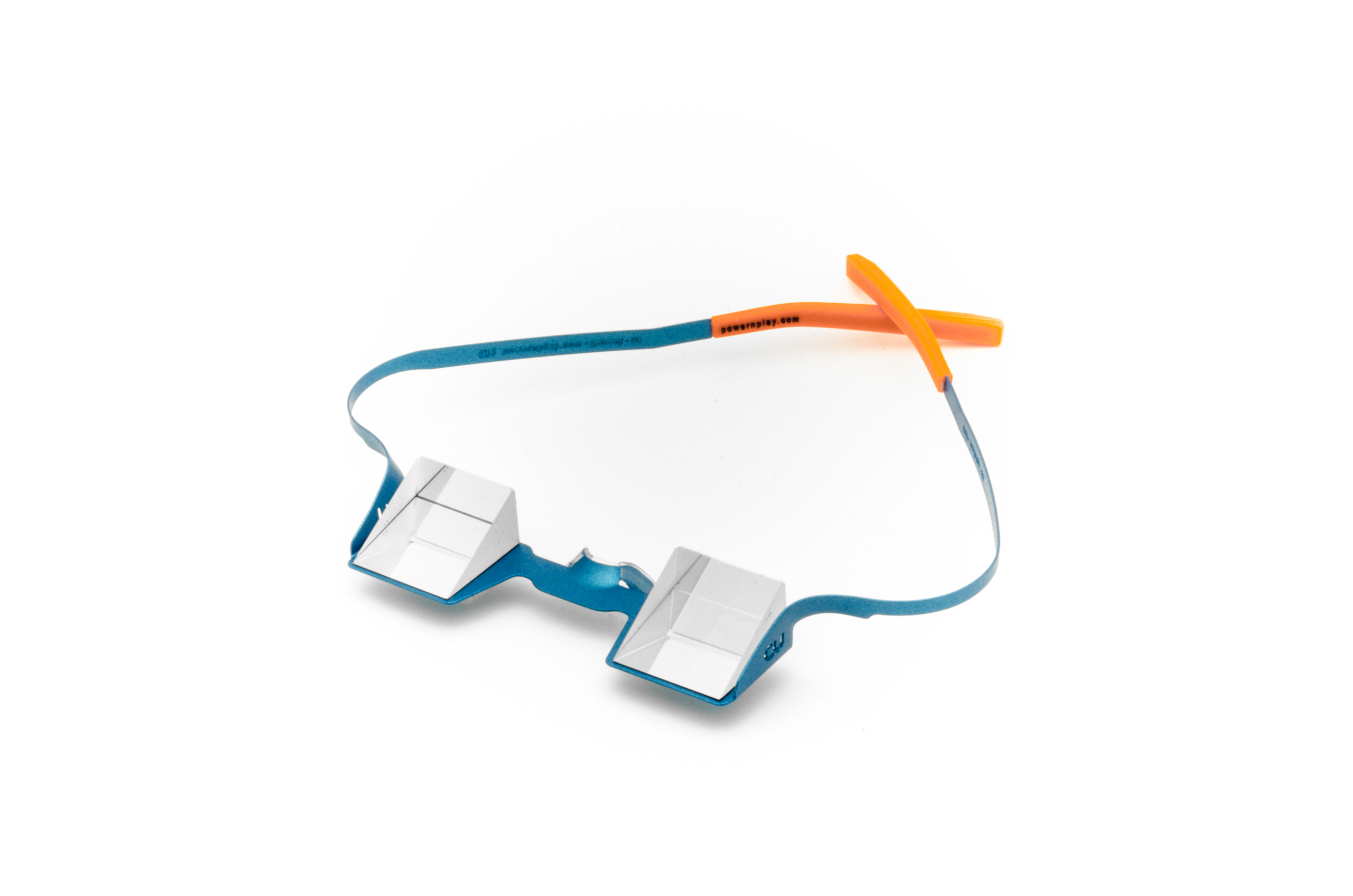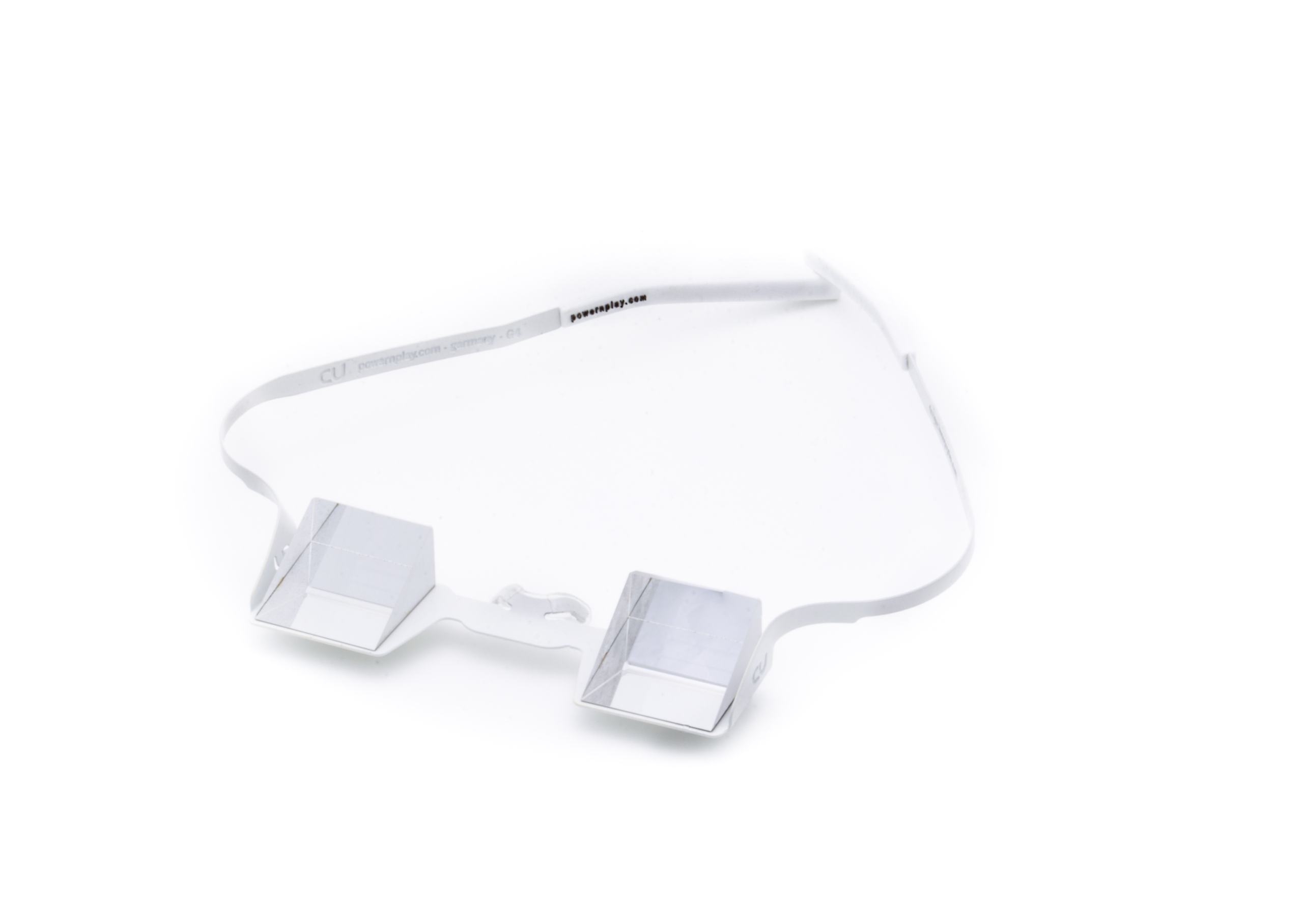CU Belay Glasses User Instructions
Summary
The essential step in getting accustomed to the CU, is keeping head still for first few routes.
Move body and eyes, but not your head !
Keeping it simple is essential to helping your brain adapt to viewing climber through prisms.
The transition is quick and safe if you follow these simple instructions.
Belay process changes when using CU
viewing climber through prisms
facing straight ahead (until you get used to CU)
standing position may change (no need to stand far back to look up)
At all times, climber safety is the main priority. Keep brake hand on rope at all times. Prescription glasses, sunglasses & helmet
CU is compatible with most prescription glasses (except large rims), sunglasses and climbing helmets.
Sunglasses essential on bright days as CU does not protect eyes from sunlight.
First use
Choose high, feature rich ceiling or wall at climbing centre, home, or eg under tree canopy.
1/ Stand still, look straight ahead, find best position for CU on bridge of nose.
Don’t move your head – even small movements (esp side to side) may cause dizziness or ‘motion sickness’ whilst your brain adapts
to the new process. Keep it simple !.
2/ Adjust image further by taking a step back or forwards.
In optimal position, you should experience a clear, sharp image, and wide field of vision.
3/ To simulate belaying, drop eyes completely out of prism for normal peripheral vision.
With head level and still, practice flicking eyes down and back up into prisms.
Double image
A confusing image may result from looking part in and out of prisms at same time.
Look fully in, or fully out of prisms.
Top-rope belaying
Choose top-rope route, well within climber’s ability.
1/ Stand perpendicular/face on to wall and route.
2/ Start with CU on tip of nose, for normal unobscured view of climber without prisms.
3/ Ensure climber 3-4 metres above ground, before viewing through CU prisms.
Ensure there is no chance of a ground fall before quick one-hand move, pushing CU into optimal position for viewing climber.
Keep brake hand on rope at all times.
4/ Move eyes, move CU, or change standing position to adjust upwards field of vision (e.g step back for overhang as climber moves along route).
5/ Don’t turn, twist or bend – simply move your standing position to adjust field of vision
6/ Flick eyes out of prisms regularly to monitor slack in rope.
7/ In a fall, climber may disappear from field of vision. It takes a second to re-focus your field of vision through CU, but climber is not in danger.
8/ Climber will eventually disappear out of the CU’s field of vision as they descend. Slow the descent to a snail’s pace, flick eyes out of prism, or push
CU away along bridge of nose.
9/ Once comfortable, you may start with CU in optimal position before climber leaves the ground, ready to flick eyes into the prism once climber above you.
10/ If in any doubt or confusion, push CU onto tip of nose, and view climber as normal.
Lead-climb belaying
View climber as normal until they are a safe distance above ground, with no excessive slack in rope, nor possibility of ground fall.
1/ It is critical that you do not view climber through CU until they’ve clipped into protection 3 times.
2/ Anticipate climber’s movement and do a regular visual check for slack in rope, by flicking eyes quickly down and back into prism.
3/ Descending climber will eventually disappear out of CU’s field of vision. Slow the descent to a snail’s pace, flick eyes out of prism,
or push CU onto tip of nose to view normally (without CU) for final few metres of descent.
4/ If in any doubt or confusion, push CU onto tip of nose, and view climber as normal.
Climber safety is priority. Keep brake hand on rope at all times.
Advanced use
1/ Once comfortable with CU, you can belay as dynamically as you are comfortable with.
2/ Move into right angles relative to wall – e.g for long, meandering, overhanging route, move through 90 degree angles,
standing with back to wall if necessary. This allows you to keep climber in same perspective, without neck-craning, twisting
or bending hips, back, knees as they proceed along route.
CU enables a neutral position not just for neck, but also back, hips and knee joints.
Try to keep whole body in neutral, unstressed position to maximise the benefits of CU.
Outdoor use
CU use is not confined to climbing wall use only – they are equally useful outdoors on sport, trad and multi-pitch routes.
For multi-pitch routes, the CU is useful for as long as the climber remains in view.
Keep CU safe for next pitch by storing in protective case provided, in dry bag attached to rear of harness.
Outdoor Safety
Whether you are more, or less likely to notice falling rock, debris etc whilst using CU is a matter of individual
judgement and familiarity with the outdoor venue. Only you and your climber can decide whether the terrain,
presence of trip hazards, obstacles, nature of rock stability etc enable safe use of CU.

